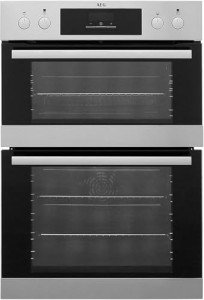The Ultimate Guide to Built-in Ovens: Enhancing Your Kitchen Experience
Built-in ovens have actually become a popular option in modern-day kitchens, providing a blend of performance, style, and benefit. Unlike traditional freestanding ovens, built-in ovens are integrated perfectly into cabinetry, supplying a structured appearance that can improve the visual appeal of any kitchen. ovensandhobs explores the various kinds of built-in ovens, their advantages, setup considerations, and maintenance suggestions.
Understanding Built-in Ovens
Built-in ovens are designed to be set up directly into kitchen cabinetry, permitting a more customized kitchen setup. They normally are available in two primary types: single and double ovens.
Kinds Of Built-in Ovens
- Single Ovens: These systems provide one cooking compartment, perfect for smaller sized kitchen areas or homes where cooking needs are modest.
- Double Ovens: As the name recommends, these systems feature two different cooking compartments, allowing users to cook multiple dishes at different temperatures simultaneously. This is particularly beneficial for large families or those who typically amuse guests.
- Steam Ovens: These ovens cook food using steam, which can help maintain wetness and nutrients. Steam ovens are acquiring popularity due to their health advantages.
- Combination Ovens: These flexible appliances integrate the functions of a regular oven and a microwave, making them best for quick cooking and reheating.
Key Features to Look For
When thinking about a built-in oven, there are numerous features that can enhance your cooking experience:
- Smart Technology: Many modern built-in ovens come equipped with wise technology, permitting users to control their oven remotely through mobile phone apps. Functions include preheating the oven, adjusting cooking times, and keeping an eye on cooking progress.
- Self-Cleaning Functions: Built-in ovens with self-cleaning abilities can save time and effort in kitchen upkeep.
- Convection Heating: This function circulates hot air for even cooking, making it ideal for baking.
- Security Features: Look for designs equipped with functions like cool-to-the-touch oven doors and automatic shut-off options for included security.
Advantages of Built-in Ovens
Visual Appeal: Built-in ovens supply a smooth and contemporary look that can boost the total design of a kitchen. They can be included into kitchen cabinetry, making them less invasive than freestanding designs.
Area Efficiency: Built-in ovens optimize kitchen area, especially in smaller sized kitchen areas where every inch counts. They can be positioned at eye level, making it simpler to keep an eye on cooking without flexing down.
Improved Functionality: With their innovative functions, built-in ovens offer enhanced cooking experiences and increased performance compared to standard ovens.
Setup Considerations
Setting up a built-in oven requires careful preparation and consideration. Here are some bottom lines to remember:
- Space Requirements: Ensure that the selected oven fits snugly into the available cabinet area. Procedure the dimensions properly, accounting for ventilation and clearance requirements.
- Electrical Requirements: Built-in ovens normally need a dedicated electrical circuit. Consult with an electrical contractor for correct setup.
- Ventilation: Proper ventilation is essential for optimal oven efficiency. Confirm that the setup area has appropriate ventilation to avoid overheating and guarantee safe operation.
- Expert Installation: While DIY setup may seem appealing, getting the help of an expert can make sure that the oven is set up correctly and securely.
Installation Steps
| Installation Step | Description |
|---|---|
| Action 1: Measure | Procedure the cabinet opening for your oven. |
| Step 2: Prepare | Prepare the electrical outlet and ventilation options. |
| Action 3: Connect | Connect the oven to power, making sure all security procedures are adhered to. |
| Step 4: Secure | Secure the oven within the cabinetry, utilizing suitable screws and brackets. |
| Step 5: Test | Run a test to ensure the oven is operating effectively. |
Upkeep Tips
Regular maintenance can extend the life of your built-in oven and ensure optimal efficiency. Here are some maintenance tips:
- Clean Regularly: Wipe down the oven exterior and clean the interior frequently. Usage self-cleaning functions where available.
- Examine Seals: Ensure that door seals are intact to keep efficiency and cooking efficiency.
- Display Performance: Pay attention to how your oven functions-- if you notice irregular cooking or uncommon sounds, it may need professional maintenance.
- Follow Manufacturer Guidelines: Always follow the maintenance standards offered by the manufacturer. This can assist avoid problems and guarantee that guarantees stay valid.
Frequently Asked Questions about Built-in Ovens
What is the difference between a built-in oven and a freestanding oven?
- Built-in ovens are integrated into kitchen cabinetry, using a structured appearance, while freestanding ovens are standalone appliances that can be placed anywhere in the kitchen.
Do built-in ovens need more maintenance than routine ovens?
- Not always. Upkeep depends on use and cleaning habits more than the type of oven. Routine care is important for all ovens.
Can I set up a built-in oven myself?
- While it is possible to set up a built-in oven yourself, it is recommended to employ a professional to ensure safe and accurate setup, particularly regarding electrical requirements.
What are the average expenses of built-in ovens?
- Costs can differ substantially based upon brand, features, and requirements. Fundamental models might begin around ₤ 800, while high-end designs can exceed ₤ 3,000.
Are built-in ovens energy-efficient?
- Lots of modern-day built-in ovens are designed to be energy-efficient. Try to find models with an ENERGY STAR accreditation for the best efficiency.
In conclusion, built-in ovens are an outstanding addition to any contemporary kitchen, combining aesthetics with performance. By comprehending the various kinds of built-in ovens, their functions, and the associated installation and upkeep requirements, homeowners can make an informed decision that boosts their cooking experience and total kitchen style. As cooking technology progresses, built-in ovens are likely to play an integral role in the future of home cooking areas, ensuring tasty meals are prepared with ease and convenience.

